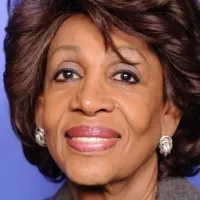A dystopia, or cacotopia, represents a community or society characterized by extreme negativity and fear, often viewed as the antithesis of a utopia. While utopia, as conceived by Thomas More, embodies an ideal society with minimal social ills, the relationship between utopia and dystopia is complex. Many dystopian societies masquerade as utopias, highlighting the subjective and often deceptive nature of societal perfection. This suggests that what one group considers ideal, another might find oppressive and undesirable.
1907: Robert Hugh Benson's "Lord of the World"
In 1907, Robert Hugh Benson's "Lord of the World" was published, depicting a dystopian society set in the future.
1920: Yevgeny Zamyatin's "We"
In 1920, Yevgeny Zamyatin's "We" was published, portraying a dystopian society.
1921: Publication of "We" by Yevgeny Zamyatin
In 1921, Yevgeny Zamyatin's novel "We" was first published, depicting a society where people are permitted to live out of public view only twice a week for one hour and are referred to by numbers instead of names.
1931: Aldous Huxley's Brave New World class system
In the 1931 novel "Brave New World" by Aldous Huxley, a class system is prenatally determined with Alphas, Betas, Gammas, Deltas and Epsilons, with the lower classes having reduced brain function and special conditioning to make them satisfied with their position in life.
1932: Aldous Huxley's "Brave New World"
In 1932, Aldous Huxley's "Brave New World" was published, offering an example of a dystopian society.
1949: George Orwell's "Nineteen Eighty-Four"
In 1949, George Orwell's "Nineteen Eighty-Four" was published, a famous example of dystopian fiction set in the future.
1952: Negley & Patrick on Joseph Hall's Mundus Alter et Idem
In 1952, Negley & Patrick described Joseph Hall's Mundus Alter et Idem as a dystopia.
1953: Ray Bradbury's "Fahrenheit 451"
In 1953, Ray Bradbury's "Fahrenheit 451" was published, providing another example of a dystopian society set in the future.
1960: Robert Bolt's "A Man for All Seasons"
In 1960, Robert Bolt's historical fiction, "A Man for All Seasons", exemplified the use of dystopian societies in artistic representations.
1962: Anthony Burgess on "Nineteen Eighty-Four"
In 1962, Anthony Burgess, author of A Clockwork Orange, suggested that the term "cacotopia" was a better fit for Orwell's Nineteen Eighty-Four, finding it more evocative of a negative society than "dystopia".
1962: C. WALSH on Dystopia
In 1962, C. WALSH wrote about the 'dystopia' or 'inverted utopia' and their importance in storytelling.
1967: Frank Kermode's Study on Prophecies
In 1967, Frank Kermode suggested that the failure of religious prophecies led to a change in society's perception. Christopher Schmidt noted that people distract themselves from impending disaster by passively watching it as entertainment.
1967: Listener Article on Dystopias
In 1967, an article in Listener described Aldous Huxley's "Brave New World" and George Orwell's "Nineteen Eighty Four" as dystopias, worlds to avoid.
1968: New Scientist on the Future
In 1968, the New Scientist expressed fear that our real future is more likely to be dystopian.
1975: Norman Jewison's film Rollerball
In 1975, Norman Jewison's film "Rollerball" reflected the dichotomy of planned economies versus free market economies in a dystopian setting.
1985: The film Brazil
In 1985, the dystopian film "Brazil" was released, depicting a dark and oppressive society.
1987: The film The Running Man
In 1987, the film "The Running Man" was released, showcasing a dystopian society.
1989: OED Usage Example
The OED (1989 ed.) provides an example of the first usage of the word dystopia, referring to the 1868 speech by John Stuart Mill.
1992: Robert Harris' "Fatherland"
In 1992, Robert Harris' "Fatherland", a story set in an alternate history timeline, presented a dystopian society.
September 2001: Suzanne Berne's essay "Ground Zero"
In September 2001, Suzanne Berne wrote the essay "Ground Zero", where she explains her experience of the aftermath of 11 September 2001.
2004: "C.S.A.: The Confederate States of America"
In 2004, the mockumentary "C.S.A.: The Confederate States of America" depicted an alternate dystopian history where slavery continues in the United States, with electronic slave auctions and control devices.
2016: Publication of "Utopian Horizons. Utopia and Ideology – The Interaction of Political and Utopian Thought"
In 2016, the book "Utopian Horizons. Utopia and Ideology – The Interaction of Political and Utopian Thought" was published.
2049: Blade Runner 2049 video game.
In the year 2049, Blade Runner 2049 depicts a dystopian theme in video games.
2077: Cyberpunk 2077 video game.
In the year 2077, Cyberpunk 2077 depicts a dystopian theme in video games.
Mentioned in this timeline
Cyberpunk is a action RPG by CD Projekt Red set...
Germany officially the Federal Republic of Germany is a Western...

A dictionary is a reference work containing lexemes from one...

Books are a means of storing information as text or...

War is defined as an armed conflict involving the organized...
Brazil is the largest country in South America ranking fifth...
Trending

12 days ago Keanu Reeves and Alex Winter Reunite for 'Waiting for Godot' Broadway Revival.
Eliah Drinkwitz is an American college football coach currently serving as the head coach for the Missouri Tigers since Before...
The Meta Quest is a standalone VR headset developed by Meta's Reality Labs succeeding the Quest Unveiled in June and...
1 month ago Christian Watson Activated from PUP List, Set to Return Against Steelers

9 days ago Jeff Goldblum adopts vegetarian diet after 'Wicked' role, citing significant personal change.

Daniel Gilbert is an American billionaire entrepreneur known for co-founding Rocket Mortgage and owning various sports teams His ventures include...
Popular
Aftyn Alyssa Behn is an American politician currently serving as...

William Franklin Graham III commonly known as Franklin Graham is...

Candace Owens is an American conservative political commentator and author...

XXXTentacion born Jahseh Dwayne Ricardo Onfroy was a controversial yet...

Marjorie Taylor Greene known as MTG is a U S...

Maxine Waters is an American politician who has served as...



